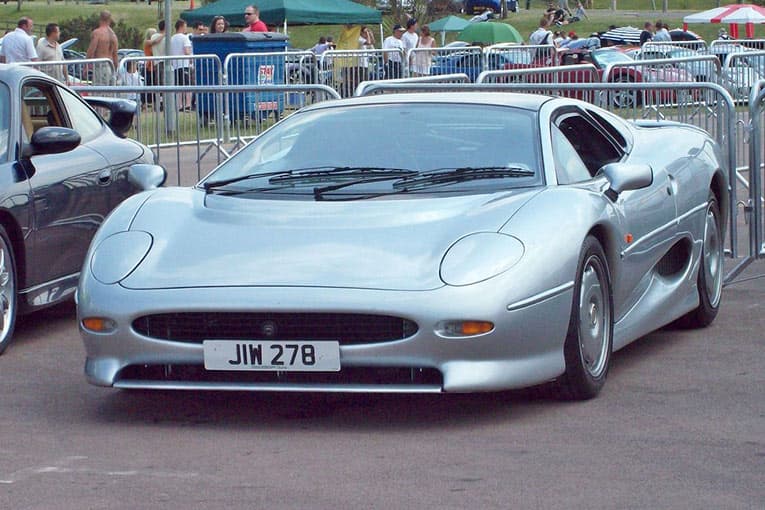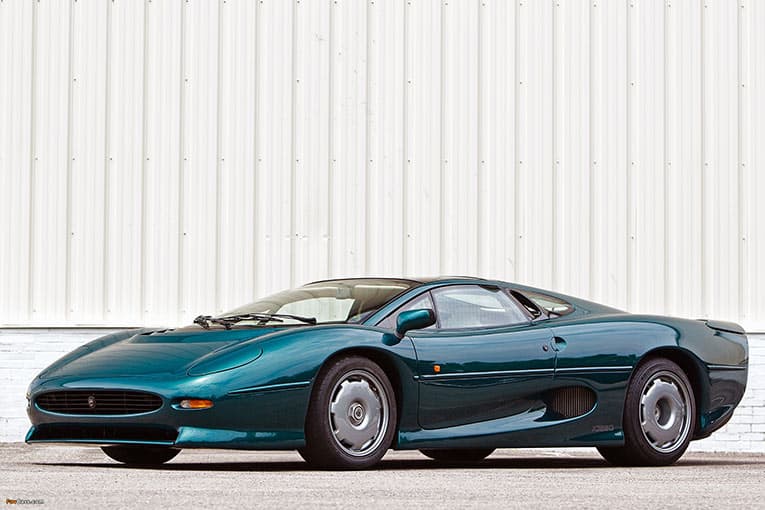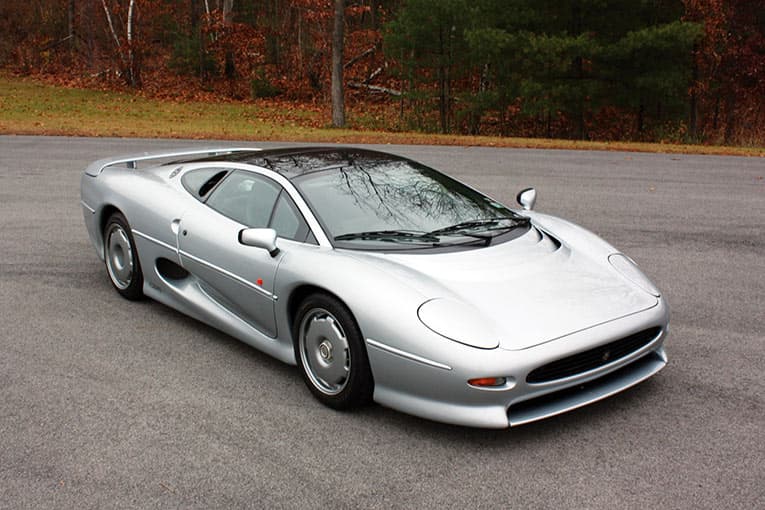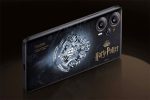The Jaguar XJ220 concept car was the a result of three and a half year development plan. It was originally conceived by Jim Randle, Jaguar’s Director Product Engineering, as a Group B road racing concept in early 1985. A group of twelve Jaguar designers and engineers volunteered to work on the project in their own time. Once Jim Randle had established the parametres of a four-wheel drive, mid engined, gound effects road car, the team developed styling proposals. By early 1987, the basic style had been finalized and the decision to move from 1/4 scale model to full prototype was taken. At this point, work started in earnest on a possible show car prototype with tremendous contribution coming from a committed group of Jaguar suppliers.
On the eve of the Birmingham International Motor Show 1988, Jaguar unveiled a stunning prototype sports car, codenamed XJ220. Its body style was boldly contemporary and distinctively Jaguar. The flowing lines were clearly reminiscent of the great Jaguar sports car designs of the past. The body consisted of a unitary frame, constructed in bonded aluminum to achieve high strength and lower weight. A steel roll cage was incorporated within the tub. The outer body panels were also made of aluminum.

The material specification and bonding process were developed in secret with the Aluminum Structured Vehicle Division of Alcan. The car featured a very large surface area of glass. Tinted and laminated flush glazing was used in windscreen, side glasses and roof panels. The doors opened up in butterfly style for easy entry and exit. There was a switch on the fascia providing powered door closing. At the rear of the car there were an adjustable rear wing enabling adjustment of the balance of downforce.
The mid-engined, all wheel drive, two-seater was powered by a 6.2-litre engine, which was based on Jaguar’s production V12, but featured 4 valves per cylinder, double overhead camshafts per bank, enlarged bore and stroke, titanium con roads and dry sump lubrication. These among the many modifications from standard. The engine was designed to be generating over 500 hp and giving a predicted maximum speed of over 200 mph. XJ220 was designed to accelerate from rest to 100 mph in 8 seconds.
The four-wheel drive system was a result of a collaboration between Jaguar and FF Developments, who carried out the detail design work and whose viscous control units were employed in the centre, rear and front differentials. The suspension design was heavily biased towards racing car principles in view of the vehicle’s performance capabilities. Both front and rear suspensions followed conventional double wishbone practice with the details adapted to suit four-wheel drive and potentially, rear wheel steer system.

Jaguar had no plans to produce the car and no orders were being accepted for it at the Birmingham Show. However, the car had such an overwhelming positive reaction that Jaguar decided to look into developing the car for the production. In December 1992, Jaguar gave the announcement of a limited production of the XJ220. When developing the production car, it turned out that if the car was to be profitable, it would have to be far less complex than originally intended. In place of the V12 engine there would be a twin-turbo V6, while only the rear wheels would be driven instead of all four as initially planed. The production car would also have to be both lighter and shorter.
Prototype 001 had its first run in June 1990 and in September Prototype 002 achieved 186 mph at the Bruntingthorpe circuit. The following months the same car succesfully completed 24 hour durability tests at the Millbrook proving ground. In May 1991 Prototype 005 achieved the fastest lap for a road car at the old Burburgring circuit during routine tyre testing. Prototype 004 then went on to achieve 212 mph at the Fort Stockton proving ground in Texas during hot climate durability testing.
The XJ220 made its debut at the Tokyo Motor Show in 1991. The car had a 3.5-litre V6 twin turbo engine producing 550 horsepower and 642 Newton metres of torque. The power was delivered to the rear wheels through a five-speed manual gearbox. Acceleration 0-60 mph took about 3.6 seconds and the top speed was over 200 mph. Assembly of the XJ220 was based at Bloxham factory, which was developed specifically for XJ220 production.

Jaguar planned to build 350 cars by the end of the 1993. When the production of the XJ220 was announced in 1989, Jaguar had no problems to find potential buyers for all the 350 cars. But by the time the car got into production, the global recession had diminished the supercar market. Also many of the initial customers were dissatisfied to the changes of the original specification. Finally just 280 cars were produced when the project ended in 1994.









